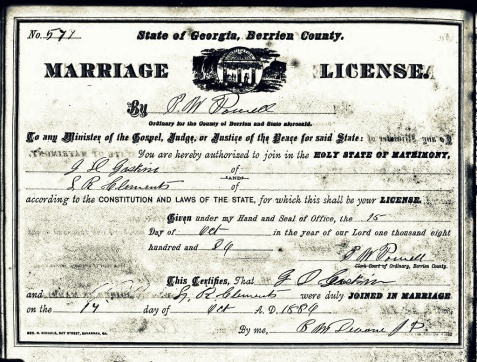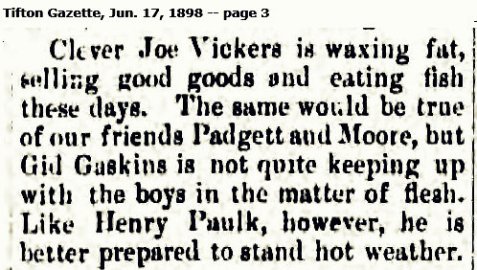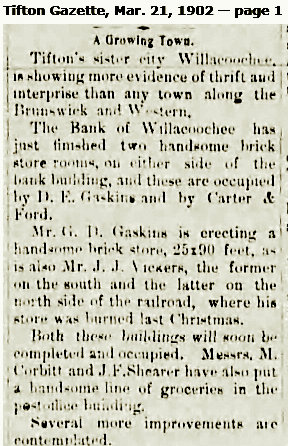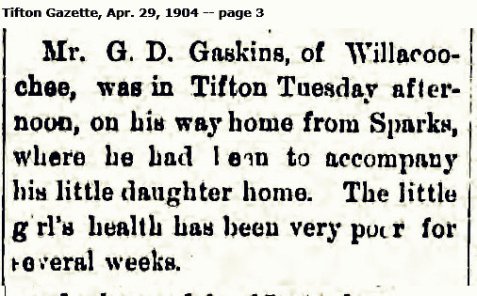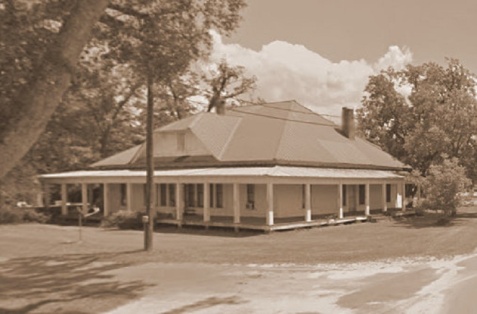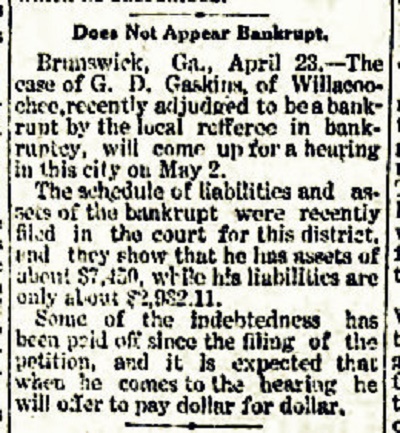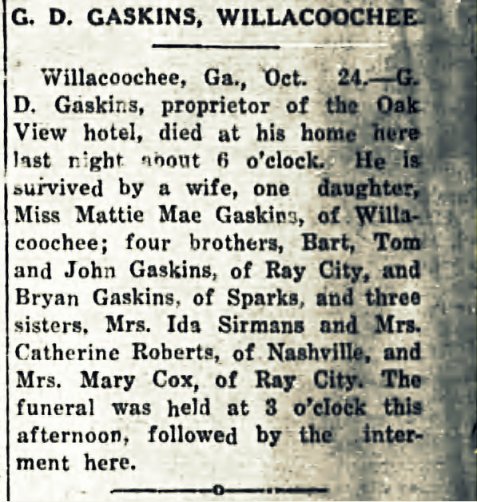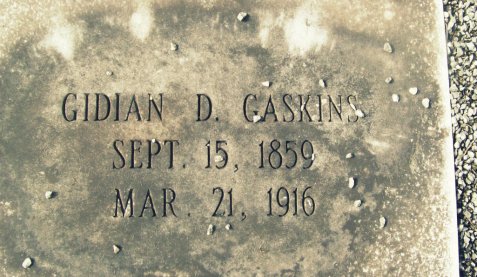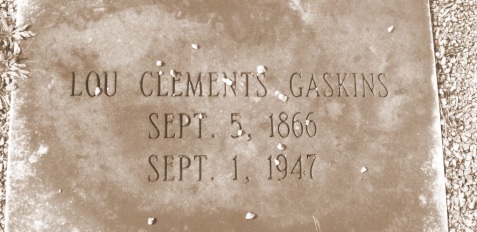1917 Berrien County Draft Board
Men who are eligible to draft shall not “hide behind petticoats or children.”
On May 17, 1917, the Governor of Georgia announced the appointment of county boards of registration for the selective draft for WWI. The local boards, composed of leading civilians in each community, were entrusted with the administration of the selective draft. These Registration Boards, also known as Exemption Boards, issued draft calls in order of numbers drawn in a national lottery and determined exemptions for dependency, essential occupations, or conscientious objection. Board Members appointed for Berrien County, GA were:
- Joe Varn Nix, Sheriff of Berrien County, GA
- James Henry Gaskins, Clerk of the Superior Court of Berrien County, GA
- Joel Ira Norwood, Ordinary of Berrien County, GA
- Dr Lafayette Alonzo Carter, Physician

Dr Lafayette Alonzo Carter (1858-1932)
Dr. L. A. Carter, of Nashville, GA was appointed as Physician for the Berrien County Draft Registration Board, 1917
The fourth member of the board, Joel Ira Norward (1869-1956) (not pictured), was a native of Berrien County, GA born on July 9, 1869, in that section of Berrien later cut into Lanier, Georgia. Joel came from a large family, with eight brothers and sisters; at the time of his birth his father, Theodore Gourdine Norwood, was 65 and his mother, Elizabeth Green Norwood, was 32. Joel Ira Norwood married Laura Virginia Shaw on October 23, 1890, and they made their home in Nashville, GA. Joel farmed for a time and was elected county treasurer of Berrien County in 1896 and re-elected in 1900 and 1904 but declined to run for the position in the election of 1908. In the early 1900s, J.I. Norwood was a business partner of fellow Draft Board member, Dr. L. A. Carter, the two being joint owners of a 250-acre land lot situated on Grand Bay, east of Ray’s Mill (now Ray City). By 1910, J. I. Norwood had his primary occupation from farming to selling insurance for a living. In 1910, he campaigned unsuccessfully for election as county sheriff of Berrien County. In 1912 he was elected Ordinary of Berrien County and was re-elected in 1916. J. I. Norwood and Laura Virginia Shaw had seven children. He died on November 2, 1956, in Lowndes, Georgia, at the age of 87, and was buried in Adel, Georgia.
The Governor’s appointments and charges to the Registration Boards was published in the Atlanta Constitution, May 20, 1917, edition.
⊕⊕⊕

On May 17, 1917, the Governor of Georgia announced the appointment of county boards of registration for the selective draft for WWI. Registrars for Berrien County were J.V. Nix, J.H. Gaskins, J.I. Norwood, and L.A. Carter.
Atlanta Constitution
May 20, 1917Governor Harris Appoints Boards of Registration
Officials in Charge Must Perfect Organizations and Swear in Registrars Within Five Days.
SHERIFFS AND MAYORS GIVEN INSTRUCTIONS
Registrations Will Be Taken at Regular Precinct Voting Places Between Hours of 7 a.m. and 9 p.m.
Following President Wilson’s proclamation of Friday, setting June 5 as selective draft registration day, Governor Nat E. Harris received a telegram from Provost Marshal General E. H. Crowder Saturday morning directing him to order the several county registration boards of Georgia to organize and prepare to take this registration.
Through Adjutant General J. Van Holt Nash, who will supervise the Georgia registration, orders were sent out Saturday to every sheriff and the mayors of all cities of more than 30,000 population in Georgia to organize their boards, swear in their registrars and to report the perfection of such organizations to the adjutant general within five days. General Nash sent out these orders by wire and is forwarding by mail necessary blanks for making the report of organization back to him.
Each county board is to be composed of the sheriff, the clerk, the ordinary and a county physician in such counties as have county physicians.
It is estimated that one registrar will be required for every 80 men to be registered.Hours of Registration.
The registration will be taken between the hours of 7 a.m. and 9 p.m., June 5, at the regular precinct voting places. Every man, sick or well, married or single, white or black, between the ages of 21 and 30, inclusive, will be required, under penalty, to register.
In cases where a man is ill or expects to be absent from his place of residence on registration day, he may apply at once to the clerk for registration.
Not only is there a jail penalty attached to failure to register, but like penalty attaches to failure on the part of registration boards, or members of such boards, to perform the full duties required of them.
When a person has registered he will receive a registration certificate.
The instructions as to how to answer the questions which will be asked of persons registering, emphasize the fact that the government does not desire that any man shall increase the misery of war by failure to qualify for exemption where other people are dependent upon him solely for support, yet , on the other hand, it is also made clear that the government does not propose that men who are eligible to draft shall “hide behind petticoats or children.”Governor Names Boards.
The governor has appointed the county boards of registration. These boards will have charge of the registration in their respective counties. The state of Georgia and war department will hold them responsible. They must see to the appointment of registrars in each precinct in their county and look after the registration and making out of returns and reporting to the governor or adjutant general.
Owning to the fact that some counties have no county physicians; some counties have as many as three and four, and others have county physicians who live many miles from the county site, Governor Harris could not appoint the county physicians as a class, but had to select physicians to serve each county without respect of their employment by the counties.
The following list shows the boards for the respective counties. The names appearing in the following order:
First, the sheriff, who will be executive officer of the board; second, the clerk of the superior court, who will be secretary or clerk of the board; third, the ordinary; fourth, the physician for the board.
The Board, once organized, saw to the appointment of registrars in each precinct in the county to administer the registrations. In Berrien County these registrars included:
Franklin Otis Baker, farmer, Alapaha, GA
Seaborn Jackson Baker, County School Superintendent, Nashville, GA.
William Arthur Bradford, farmer, Adel, GA.
Eugene F. Bussey, merchant, Enigma, GA.
James R. Carter, farmer, Adel or Greggs, GA.
John Samuel Carter, farmer, Lois, GA.
James Griffin Connell, farmer, Massee, GA.
William Riley Crumpton, merchant, Lenox, GA.
William Montieth Evarts, farmer, Adel, GA.
Lyman Franklin Giddens, barber, Ray City, GA.
Vinter B. Godwin, general merchandise salesman, Lenox, GA.
George Washington Gray, farmer, Enigma, GA.
John D. Gray, farmer, Alapaha, GA.
Frank Griffin, farmer, Nashville, GA.
John T. Griffin, mail carrier, Nashville, GA.
Sims Griffin Griffin, farmer, Nashville, GA
William Henry Griffin, farmer, Nashville, GA.
Adolphus Brown Hammond, farmer, Enigma, GA.
Charlie Brown Harris, farmer and merchant, Enigma, GA
Samuel J. Harwell, druggist, Adel, GA.
Edward L. Ivey, naval stores operator, Cecil, GA.
Joseph J. Knight, cross tie camp manager, Milltown (Lakeland), GA.
Perry Thomas Knight, minister, Milltown (Lakeland), GA.
Henry Lee Lovett, farmer, Sparks, GA.
Ralph George Luke, bank cashier, Cecil, GA.
Perry Newton Mathis, bookkeeper for J.N. Bray Lumber Co., Cecil, GA.
Hady Calvin McDermid, farmer and doctor, Sparks, GA.
William J. McKinney, dry goods merchant, Sparks, GA.
Malcom J. McMillan, retail merchant, Alapaha, GA.
B. G. Moore.
Henry Moore, Alapaha, GA.
Irwin Newton Moore, farmer, Nashville, GA.
Luther Glenn Moore, student, Sparks, GA.
Richmon Newbern, farmer, Massee, GA.
Charles. S. Parham, salesman and teacher, Nashville, GA.
William Manning Pafford, dry goods salesman, Milltown (Lakeland), GA.
Arthur Henry Robinson, clergyman, Adel, GA.
Thomas Morgan Rowan, farmer, Nashville, GA.
W. Rowe;
David Asa Sapp, turpentine operator, Ray City, GA.
James David Cooper Smith, dry goods merchant, Tifton, GA
H.C. Smith;
Early Hamilton Spivey, farmer, Bannockburn, GA.
O. Sutton;
James Henry Swindle, merchant, Ray City, GA.
Charles Oscar Terry, druggist, Ray City, GA.
William Edwin Tyson, teacher, Lenox, GA.
Related Posts:
- J. H. Gaskins and the Draft Board Scandal
- WWI Registration Certificate of James Isaac Lee
- Joseph Burton Calhoun ~ WWI Soldier
- Carlos J. Boggs and the Buffalo Infantry of WWI
- Lorton W. Register ~ Killed in Action, WWI
- WWI Boom for Clements Lumber Company at Ray City, GA
- WWI Vocational Rehabilitation of Thomas J. Collins
- Armistice Day Memorial to Soldiers from Berrien County, GA Killed During WWI
- Ralph Knight ~ Ray City Soldier ~ WWI
- Death Lurked in the North Channel
- Otranto Doctor Writes of Ship’s Final Hours
- Ray City, GA Veterans of World War I
- Let Us Unveil
- Hosea Peeples “Hod” Clements
- Hartridge Columbus Futch and the Construction of Camp Wheeler
- Rossie O. Knight and the Nixon Nitration Works
- Dr. Francis Marion Burkhalter Died in France
- On the Home Front, Ray City, GA, 1918
- Gordon Williams (1894 – 1918)




